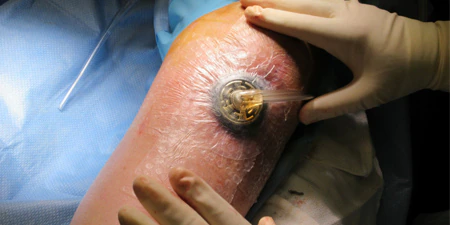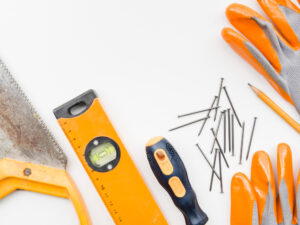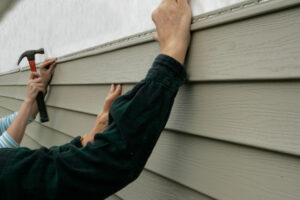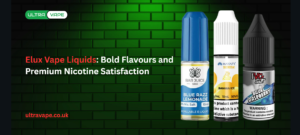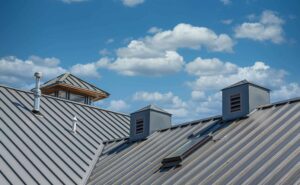How Does a Wound VAC Work to Accelerate Healing?
In the world of modern wound care, few treatments have revolutionized healing like the wound VAC. Used in hospitals, clinics, and even home care settings, this innovative device speeds up recovery for patients with chronic or surgical wounds. But how does a wound VAC work, and why is it so effective? This blog will walk you through the mechanism, benefits, and everything else you need to know about this life-changing therapy.
What Is a Wound VAC?
Before diving into how does a wound VAC work, it’s important to understand what it is. VAC stands for Vacuum-Assisted Closure, and it’s a type of Negative Pressure Wound Therapy (NPWT).
A wound VAC is a portable medical device that uses controlled suction (negative pressure) to help close wounds faster. It removes fluid, reduces infection risks, and promotes healthy tissue growth. Wound VACs are commonly used for:
- Surgical wounds
- Diabetic ulcers
- Pressure ulcers (bedsores)
- Traumatic injuries
- Non-healing chronic wounds
How Does a Wound VAC Work?
So how does a wound VAC work exactly? The process is simple yet highly effective. Here’s how it functions:
1. Application of a Foam Dressing
The process begins by placing a sterile foam dressing directly into or over the wound. This foam conforms to the wound shape and helps evenly distribute suction pressure.
2. Sealing the Wound
A transparent adhesive drape is placed over the foam and surrounding skin to create an airtight seal. This helps maintain a sterile environment and locks in the negative pressure.
3. Connection to the VAC Device
A small tube is connected to the foam dressing and attached to the wound VAC machine. This machine controls the amount and frequency of suction.
4. Applying Negative Pressure
Once the system is sealed and connected, the VAC device applies continuous or intermittent negative pressure. This suction:
- Draws out excess fluid and infection
- Reduces swelling around the wound
- Increases blood flow
- Promotes the formation of granulation tissue (new tissue that helps close the wound)
That’s the core of how does a wound VAC work—by creating a healing-friendly environment through suction and isolation.
Benefits of Using a Wound VAC
Now that you understand how does a wound VAC work, let’s look at why it’s so effective:
Faster Healing
By removing fluids and reducing swelling, the VAC accelerates tissue regeneration, helping wounds heal up to 2x faster than traditional methods.
Decreased Risk of Infection
The sealed environment minimizes exposure to bacteria and contaminants, a critical feature for patients with compromised immunity or large wounds.
Less Frequent Dressing Changes
Traditional wounds require daily or twice-daily dressing changes. A wound VAC can stay in place for several days, reducing the frequency of dressing changes and minimizing pain.
Enhanced Comfort and Mobility
Modern wound VACs are compact and portable, allowing patients to remain mobile while receiving treatment—even at home.
Lower Healthcare Costs
Faster healing and fewer complications mean fewer hospital visits and overall cost savings in the long term.
Who Can Benefit from a Wound VAC?
The answer to how does a wound VAC work becomes even more valuable when you consider the wide range of people who benefit from it:
- Post-surgical patients with large incisions
- Individuals with diabetic ulcers or pressure sores
- Trauma victims with deep, irregular wounds
- Cancer patients with surgical wounds or tumor resections
- Burn patients with skin grafts
It’s also used in orthopedic, vascular, and plastic surgery to improve healing outcomes.
Types of Wounds Treated
Here are common wound types treated with VAC therapy:
- Surgical wounds with high infection risk
- Acute wounds from accidents or injuries
- Chronic wounds like diabetic foot ulcers
- Dehisced wounds (surgical wounds that reopen)
- Grafts and flaps requiring stabilization
In all these cases, the mechanism behind how does a wound VAC work offers significant advantages over standard wound care.
Is Wound VAC Treatment Painful?
Wound VAC therapy is generally well tolerated, but some patients may experience mild discomfort during dressing changes or when negative pressure is first applied. Your healthcare provider may adjust the settings or recommend pain management strategies to make the treatment more comfortable.
How Long Is a Wound VAC Used?
Duration varies based on:
- The type and size of the wound
- The patient’s overall health
- Rate of healing
Many patients use a wound VAC for 1 to 4 weeks. Some may require it longer, depending on complexity. Your care team will regularly assess the wound and adjust the treatment plan as needed.
At-Home Wound VAC Therapy
Thanks to advancements in medical technology, patients can now receive VAC therapy at home. Here’s what you need to know:
- A nurse will typically apply and monitor the device.
- Patients receive instructions for care and troubleshooting.
- You’ll have follow-up visits to evaluate healing.
Understanding how does a wound VAC work makes it easier for patients and caregivers to manage the device confidently and ensure proper recovery.
Risks and Precautions
While VAC therapy is highly effective, it’s not suitable for all wounds. Patients with exposed blood vessels, untreated osteomyelitis (bone infection), or active bleeding may not be ideal candidates. Complications are rare but may include:
- Skin irritation
- Bleeding
- Infection if improperly applied
That’s why it’s crucial for treatment to be administered or supervised by trained professionals.
Conclusion
So, how does a wound VAC work? It creates a sealed, sterile environment and applies suction to the wound area, removing fluids and promoting faster, cleaner healing. It’s an innovative solution that’s transformed the way medical professionals handle complex and slow-healing wounds.
If you or a loved one are dealing with a stubborn wound, ask your doctor whether wound VAC therapy is right for you. With the right care, faster and safer healing is within reach.
Frequently Asked Questions
Q1: How does a wound VAC work to heal wounds faster?
It applies negative pressure to remove fluids and stimulate new tissue growth, speeding up the healing process.
Q2: Is a wound VAC suitable for all types of wounds?
No, it’s best for chronic, surgical, and large wounds. It’s not suitable for wounds with untreated infections or exposed organs.
Q3: How often is the dressing changed in wound VAC therapy?
Every 2 to 3 days, or more frequently if infection or leakage occurs.
Q4: Can a wound VAC be used at home?
Yes, portable wound VAC systems make at-home therapy possible under medical supervision.
Q5: Are there risks to wound VAC treatment?
Yes, though rare. Possible risks include bleeding, infection, or skin irritation.
